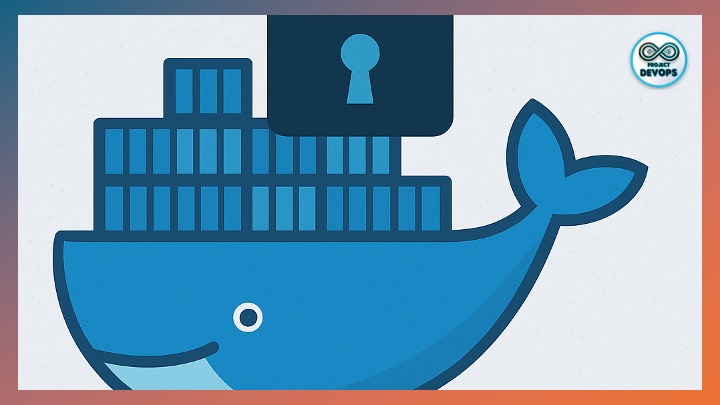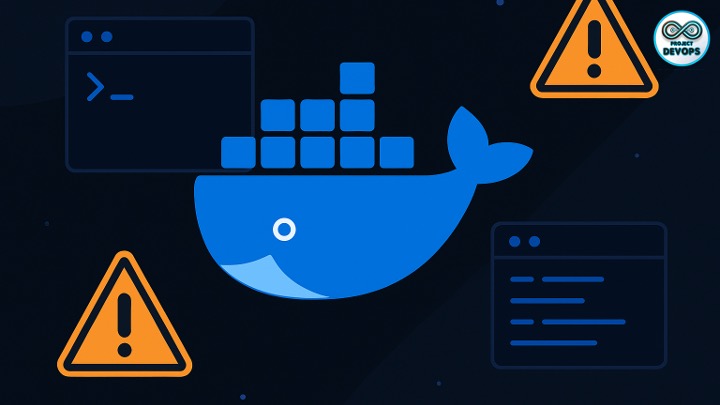Building Docker Hardened Images: A Practical Guide for Secure Container Deployments

Here’s a complete SEO-friendly blog draft on Docker hardened images, with conceptual explanations, practical examples, and step-by-step details you can directly publish or adapt for your blog.
Containers have revolutionized application delivery—but with speed and convenience comes the risk of insecure images. A single vulnerable dependency or misconfigured Dockerfile can expose your workloads to attacks. That’s where Docker hardened images come in: minimal, secure, and production-ready builds designed to withstand real-world threats.
In this blog, we’ll dive into:
What a hardened Docker image is
Best practices for hardening Docker images
A full practical example with step-by-step Dockerfile implementation
Security scanning and validation techniques
By the end, you’ll know how to build hardened images that are lean, reproducible, and compliant with enterprise security standards.
What is a Hardened Docker Image?
A hardened image is a security-optimized container image built by following practices that reduce attack surfaces and enforce least privilege. Unlike traditional images, hardened images:
Use minimal base layers (e.g.,
distroless,alpine, orscratch)
Avoid unnecessary packages and tools
Enforce non-root execution
Implement image signing and vulnerability scanning
These measures make exploitation significantly harder while reducing maintenance overhead.
Best Practices for Docker Image Hardening
Choose a Minimal Base Image
Use lightweight bases likealpine,debian-slim, or Google’sdistrolessto minimize vulnerabilities.
Multi-Stage Builds
Compile code in a builder stage, then copy only the final binaries into a minimal runtime stage.
Run as a Non-Root User
Prevent privilege escalation by creating and running under a non-root user.
Use Explicit Versions
Pin versions of base images and dependencies to ensure reproducibility.
Remove Secrets from Images
Never bake credentials, SSH keys, or .env files into Docker images.
Enable Read-Only Filesystems
Use Docker’s --read-only flag and mount writable directories only where needed.
Scan and Sign Images
Use tools like Trivy, Grype, or Docker Scout to detect vulnerabilities. Sign images with cosign or Notary.
Practical Example: Hardened Docker Image for a FastAPI App
Let’s walk through building a secure, production-ready image for a Python FastAPI application.
Project Structure
fastapi-secure-app/
├── app/
│ ├── main.py
│ └── requirements.txt
├── Dockerfile
└── .dockerignoreSample app/main.py
from fastapi import FastAPI
app = FastAPI()
@app.get("/")
def read_root():
return {"message": "Hello from a hardened Docker image!"}requirements.txt
fastapi==0.115.0
uvicorn[standard]==0.30.0Hardened Dockerfile
# ---- Builder Stage ----
FROM python:3.12-slim AS builder
# Set workdir
WORKDIR /app
# Install build tools (only in builder)
RUN apt-get update && apt-get install -y --no-install-recommends gcc \
&& rm -rf /var/lib/apt/lists/*
# Install dependencies in a virtual environment
COPY app/requirements.txt .
RUN python -m venv /opt/venv \
&& /opt/venv/bin/pip install --no-cache-dir -r requirements.txt
# ---- Final Stage ----
FROM gcr.io/distroless/python3.12
# Copy only the venv and app code
COPY --from=builder /opt/venv /opt/venv
COPY app /app
# Set environment variables
ENV PATH="/opt/venv/bin:$PATH" \
PYTHONUNBUFFERED=1
# Create non-root user
USER 1001
# Set working directory
WORKDIR /app
# Expose port
EXPOSE 8080
# Run FastAPI app
CMD ["uvicorn", "main:app", "--host", "0.0.0.0", "--port", "8080"].dockerignore
__pycache__/
*.pyc
*.pyo
*.pyd
.env
.gitBuild and Run
# Build
docker build -t hardened-fastapi:latest .
# Run with read-only filesystem
docker run -d --name secure-app \
--read-only \
-p 8080:8080 hardened-fastapi:latestNow visit: http://localhost:8080 🚀
Security Validation
1. Scan Image with Trivy
trivy image hardened-fastapi:latestOutput will highlight vulnerabilities, misconfigurations, and secrets.
2. Enforce Policy with Docker Scout (or Grype)
docker scout cves hardened-fastapi:latest3. Sign Image with Cosign
cosign sign hardened-fastapi:latest
cosign verify hardened-fastapi:latestThis ensures your image can’t be tampered with in registries.
Additional Hardening Steps
Drop Linux Capabilities: Run with
--cap-drop=ALL --cap-add=NET_BIND_SERVICE.
Enable seccomp/apparmor: Add custom security profiles.
Automate Scanning in CI/CD: Integrate Trivy/Grype into GitHub Actions or Jenkins.
Regularly Patch Dependencies: Use Dependabot or Renovate for automatic updates.
Conclusion
Hardened Docker images are the foundation of secure containerized apps. By using minimal base images, multi-stage builds, non-root users, and vulnerability scanning, you drastically reduce risk while keeping performance high.
Whether you’re deploying to Kubernetes, ECS, or a bare Docker host, adopting hardened images ensures that your containers are production-grade and compliant with modern security practices.
Comments (0)
No comments yet. Be the first to share your thoughts!
